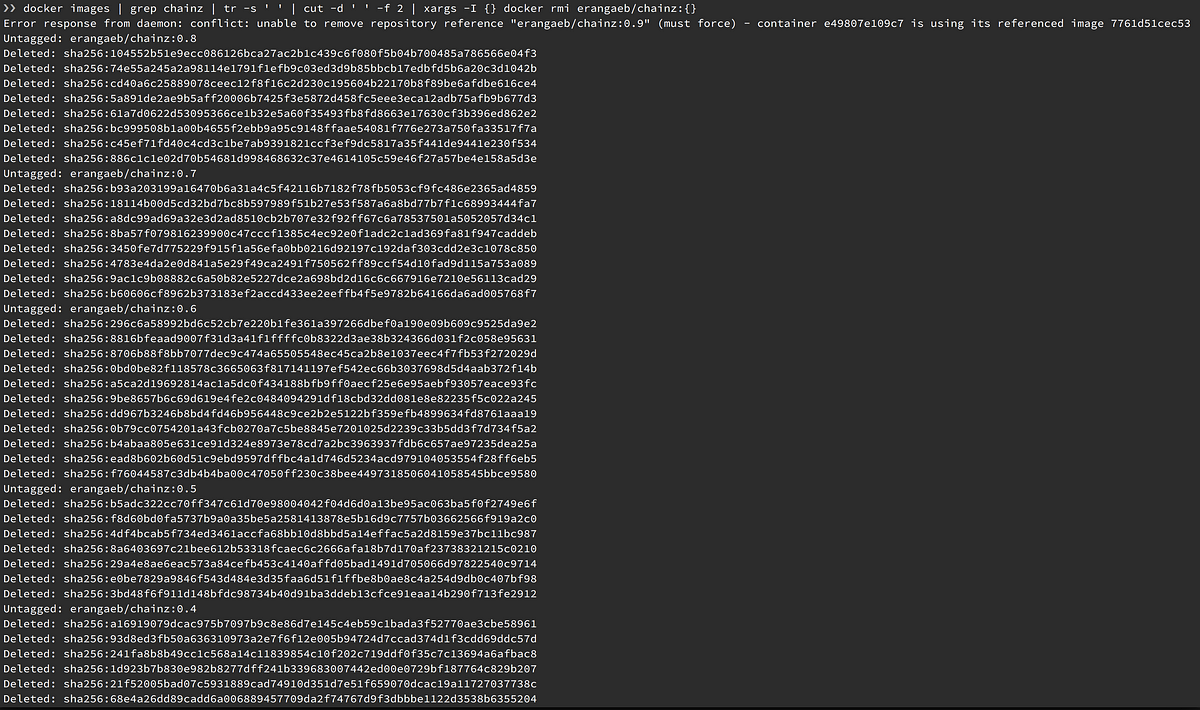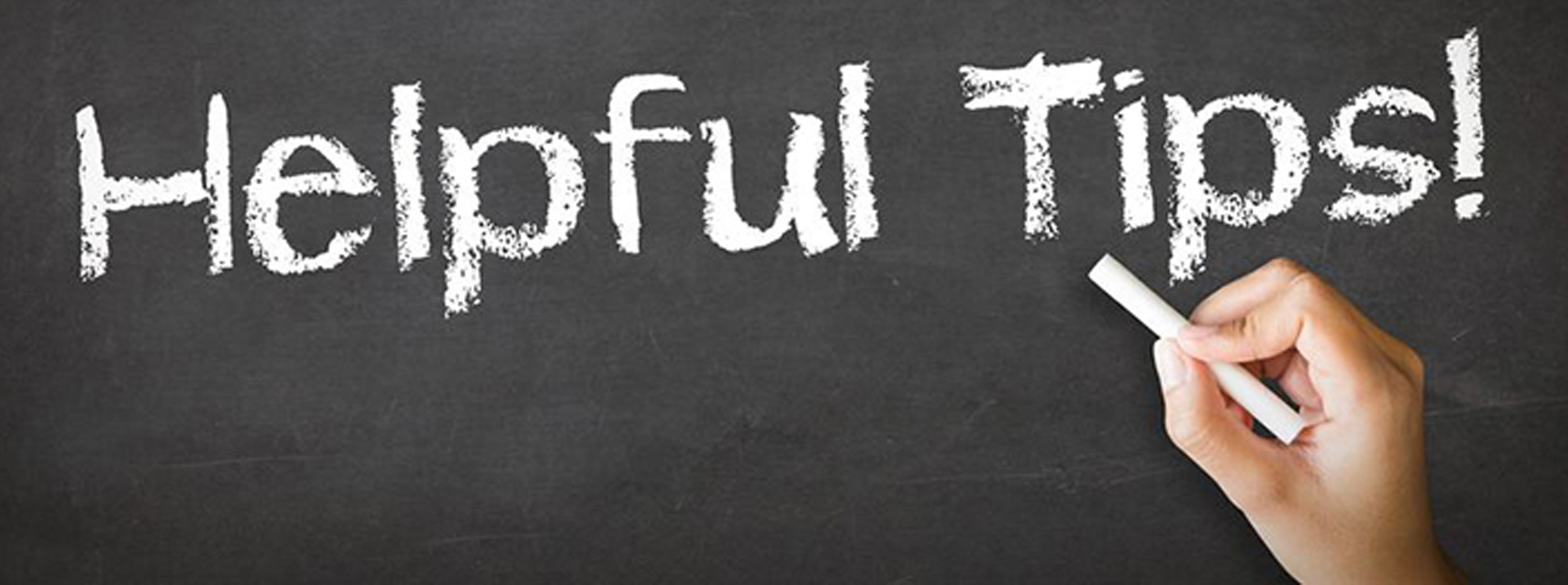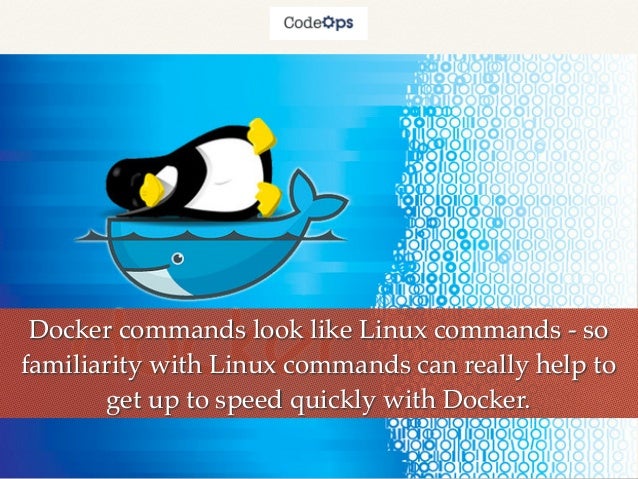Now that you just left the Swarm and stopped all operating containers its good comply with to do away with all containers, container images, networks and volumes. This need to be achieved making use of the next command within the Elevated PowerShell window. This will do away with all stopped containers by getting an inventory of all containers with docker ps -a -q and passing their ids to docker rm. This shouldn't do away with any operating containers, and it'll inform you it can't do away with a operating image.
The consumer can specify the bottom picture and record of instructions to be run when a container picture is deployed or startup for the primary time. In this article, you may discover ways to create a Windows-based docker picture from Dockerfile utilizing a Windows container. The docker system prune command removes all stopped containers, dangling images, and unused networks.
If you cross the --volumes flag, it should take away all unused volumes too. It's central to notice that that is predicated on the time the pictures have been created in your system , not when the seller created or printed the image. At the top of every construct step carried out inside a Docker wrapper, a construct agent runs the chown command to revive the entry of the buildAgent consumer to the checkout directory. This is completed to stop a possible limitation when the data from a Docker container are created with the basis possession and can't be eliminated by the construct agent later.
By default, Packer creates a short lived folder beneath your own dwelling directory, and makes use of that to stage recordsdata for importing into the container. If you wish to vary the trail to this momentary folder, you can actually set the PACKER_TMP_DIR. This should be useful, for example, when you will have your own dwelling listing permissions arrange to disallow entry from the docker daemon. Example - I even have an internet app which makes use of a SQL database. In dev and check environments I'll be operating SQL Server in a container for the database.
The container is known as petshop-db and all of the connection strings within the online configuration use petshop-db because the database server name. If I wish to run the online app locally, however nonetheless use a container for the database I simply start off the container and run d2h petshop-db. Now my net app makes use of the container IP from the hosts file, and I can run the complete stack with docker-compose up with out altering config. Now, attempt to envision the native folder of your container host machine the place we created the folder. Initially, we created solely two documents once we created that folder however now, there'll be three documents on the grounds that we have now added an additional file within the container image.
Sat, Mar 17, 2018With multi-stage builds, you employ a number of FROM statements in your Dockerfile. Each FROM instruction can use a special base, and every of them begins a brand new stage of the build. You can selectively copy artifacts from one stage to another, abandoning all the things you don't need within the ultimate image. However, every step creates a new, untagged photograph (or "dangling" image), which serves because the bottom for the subsequent step. Having these untagged photographs within the Docker cache hastens the construct process, however consumes exceptionally some disk area and clutters up the output of docker images.
I want to share with you Powershell script for dealing with Docker containers and pictures exceptionally eliminating them. This script saved me quite much of time seeing that I want comparatively mostly recreate docker photographs to get new adjustments inside. This instruction covers among the familiar instructions used to take away images, containers, and volumes with Docker.
There are many different mixtures and flags that may be used with each. For a complete information to what's available, see the Docker documentation for docker system prune, docker rmi, docker rm, and docker quantity rm. If there are accepted cleanup duties you'd prefer to see within the guide, please ask or make options within the comments. Docker makes it straightforward to wrap your purposes and companies in containers so you'll be capable to run them anywhere.
This instantly removes all docker images/containers/volumes from the filesystem. When modifying an present Docker Image, we have to make positive the change should not disrupt different integrations which will use that very similar package. Thus, all docker pictures are created with a singular immutable adaptation tag, which we do not permit overriding. However, any of these will trigger docker rm or docker rmi to throw an error when there are not any matching containers. The older docker rm $(docker ps -aq) trick was even worse because it tried to take away any operating container, failing at every one.
Cortex XSOAR maintains a repository of Docker images, all of which can be found within the Docker hub beneath the Demisto organization. The Docker photograph creation course of is managed within the open-source challenge demisto/dockerfiles. A search of the repository-info department must be completed sooner than making a brand new image.
The repository is up to date nightly with all graphic metadata and os/python packages utilized within the images. We collect an inventory of all untagged docker images, pick out the third column containing the graphic IDs and feed the end result to docker rmi. Let's take a examine the several ingredients of this command line. Dockerfiles are purely textual content information that comprise construct directions utilized by Docker to create a brand new container graphic that's predicated on an present image. For all the niceties of uninstalling Docker from a Windows Server environment, macOS customers have it far extra laidback than their Windows counterparts.
Experts advocate that customers make the most of the built-in uninstall function in Docker. Go to the Preferences part on Docker's UI, and click on on both the Insect or Bomb icon , which opens the troubleshooting area. Click the Uninstall backside close to the underside of the list. This procedure additionally removes associated elements like containers and pictures automatically. Lastly, the ultimate command deletes Docker-related content material reminiscent of container images, containers, volumes and networks. I've began to make use of the file on demand function a growing number of since few months and really quickly, I've felt a should discover an answer relating to the best means I use my OneDrive.
It works additionally within the opposite means however it's much less important seeing that your file is in your disk. In different words, I've desired to construct a "tool" the place I can cut up with no efforts the recordsdata hosted within the cloud and the one who must be on my machine. Anyway, I don't know if I'm the one one on this case, however I've desired to share what I've build, probably it could aid a few of you.
Let's say You have developed your system, now it really is working however there are a selection of containers left. You wish to do away with containers created earlier than that working version. Determine the ID of the working container with docker ps. Now, with that final technique, we've encapsulated your complete lifecycle of the execution of that script into one line of code. It's like this script execution under no circumstances happened…or did it ;) All kidding aside, we efficiently have a serverless computing platform now. For this to work well, we'll want some factor to drive that process.
In an upcoming weblog post, we'll discuss extra about how we will automate the operating of PowerShell containers in Kubernetes. The if-not-present pull coverage shouldn't be utilized in case your builds use photographs which are up to date regularly and have for use in most up-to-date versions. In such a situation, the community load discount created by this coverage could be much less worthy than the want of the very frequent deletion of nearby copies of images. This can velocity up the time required to check if there's loads of I/O associated work, reminiscent of with databases. If you employ the tmpfs and services_tmpfs selections within the runner configuration, you'll be able to specify a number of paths, every with its personal options. This is an instance config.toml to mount the info listing for the official Mysql container in RAM.
Now run the docker pictures command to view the pictures which might be available. You can see under an instance of the container1 picture created. We transfer these IDs to docker rmi and we as a result eliminate all of the images. Docker provides you all of the resources that you must clear up your system from the command line.
Once tagged, the ensuing artifact is then exceeded on to thedocker-push post-processor which handles pushing the photograph to a container repository. The ensuing docker photograph is then exceeded on to the docker-push post-processor which handles pushing the photograph to a container repository. We shall now strive making a knowledge quantity which might be utilized by multiple container images. This will allow us to make use of a standard statistics disk for greater than two container images. This is identical as making a Virtual Machine by making use of the identical storage account and creating two totally different Virtual Machines in Azure.
This will allow you to entry statistics exterior the container and it'll be almost like mounting a folder someplace exterior the container and taking statistics from it. We additionally checked out how one can encapsulate the entire execution of a script and the containers life cycle into one line of code. Really supplying you with the power to run PowerShell Core anyplace on any platform. This is analogous to podman-env however just for Docker runtime. When making use of a container or VM driver , you'll still reuse the Docker daemon inside minikube cluster.
This means you don't should construct in your host machine and push the picture right into a docker registry. You can simply construct contained in the identical docker daemon as minikube which accelerates nearby experiments. The on no account pull coverage disables pictures pulling completely. In that case, you can actually run the construct container in privileged mode, and make the construct atmosphere of the runner secure. Before downloading the picture from the picture repository, let's first evaluate the present Docker base pictures that you simply at present have in your nearby system.
To do so, run a PowerShell console as Administrator after which style docker images. This command returns all photographs in your native system. We already know that docker ps -q will record all operating container IDs. Well that may return all containers, not only the operating ones.
Docker's container-based supply shape for program program packages makes a convenient-to-visualize service. Users acquired it well, and it has notable benefits for useful resource effectivity in comparison with VM. Still, Docker is not suited to each enterprise or dwelling user's needs. Because its set up would be extra concerned than most software, uninstalling Docker can additionally be extra multifaceted than the norm slightly.
However, customers can end the chore of turning into 'dockless' in minutes, at worst. Technically, the command of the construct runner is wrapped in a shell script, and this script is executed inside a Docker container with the docker run command. All the small print concerning the began process, textual content of the script, and so on, are written into the construct log . There's a bunch of docker instructions I run all of the time, and I've saved numerous hours of typing and making typos and fixing typos by placing them in PowerShell aliases. When I wish to tear down all containers I run drmf, once I wish to add a container's IP tackle to my hosts file I run d2h.
Here is my docker-cleanup script, which removes untagged containers and images. Learn how you can start off with Cloud Build by constructing a Docker picture and pushing the picture to Artifact Registry. Artifact Registry gives you a single location for managing exclusive packages and Docker container images. With Docker Image Manifest V2 Schema 2 images, you need to use the --image-tag possibility of the put-image command to retag an present image. You can retag with out pulling or pushing the picture with Docker.
For bigger images, this course of saves a substantial quantity of community bandwidth and time required to retag an image. This pull coverage additionally needs to not be used in case your runner might be utilized by completely different customers which shouldn't have entry to non-public pictures utilized by every other. Especially don't use this pull coverage for shared runners. When the if-not-present pull coverage is used, the runner will first assess if the graphic is current locally.
If it is, then the nearby model of picture will probably be used. The certainly not pull coverage must be used when you would like or must have a full manipulate on which pictures are utilized by the runner's users. It is a sensible selection for personal runners which are devoted to a challenge the place solely detailed pictures might possibly be utilized . The default possibility is prune-volumes which the script will get rid of all unused containers and volumes.
The service picture can run any application, however probably the most typical use case is to run a database container, e.g., mysql. It's less complicated and quicker to make use of an present picture and run it as a further container than deploy mysql each time the task is built. A Docker picture is run on a container through the use of the Docker Engine.
Docker photographs have many advantages akin to portability , customizable, and tremendously scalable. When you kind "docker images" in PowerShell, you're greeted with a pile of previous unused photographs consuming tons of disk space. You can execute the under instructions in PowerShell to do away with all of the pictures and docker containers. Alternatively, you need to use the docker ps with the -q / --quiet choice to generate an inventory of container IDs to remove, and use that listing as argument for the docker rm command. I lately started out making use of Docker and under no circumstances realized that I need to use docker-compose down in preference to ctrl-c or docker-compose quit to dispose of my experiments.
I now have numerous unneeded docker pictures locally. Previous variants of Jellyfin included Ubuntu underneath the Debian repository. This has now been cut up out into its very own repository to raised deal with the separate binary packages. If you encounter errors concerning the ubuntu launch not being located and also you earlier configured an ubuntu jellyfin.list file, please comply with these steps. Podman does not require root entry to run containers.
For security, the Jellyfin container ought to be run utilizing rootless Podman. Furthermore, it can be safer to run as a non-root consumer contained within the container. The --user possibility will run with the furnished consumer id and group id contained within the container. The --userns keep-id flag ensures that present user's id is mapped to the non-root user's id contained within the container. With this builder, you will repeatedly create Docker pictures with out utilizing a Dockerfile.
You want not know the syntax or semantics of Dockerfiles. Fix_upload_owner - If true, recordsdata uploaded to the container shall be owned by the consumer the container is operating as. If false, the proprietor will rely upon the model of docker established within the system.




























